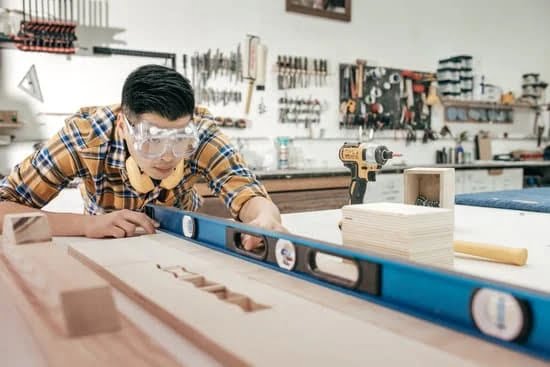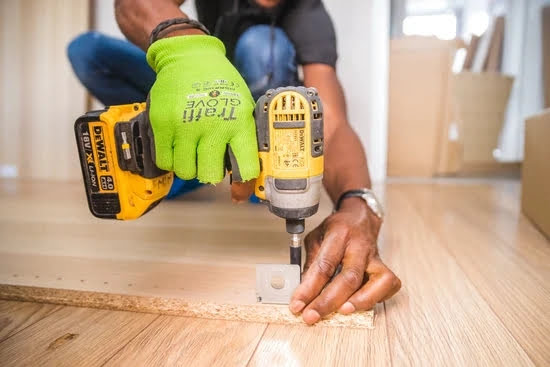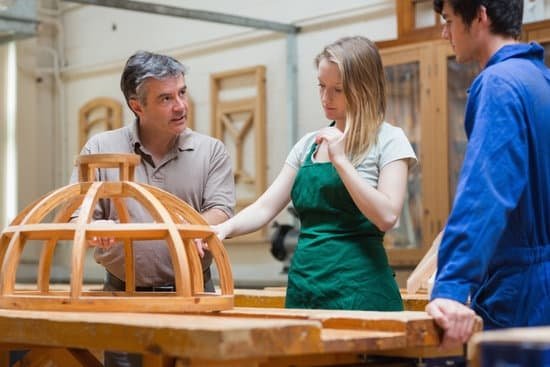Glue up woodworking is a crucial step in creating durable and strong wood projects. Understanding the importance of this process is essential for ensuring the success of your woodworking endeavors. Whether you are a beginner or an experienced woodworker, mastering the art of glue up can significantly impact the quality and longevity of your creations.
In this article, we will explore the significance of glue up woodworking and provide valuable insights into achieving successful results. From different types of wood glues to preparing the wood for glue up, as well as tips for a successful outcome and common mistakes to avoid, we will cover all aspects of this fundamental woodworking technique. Additionally, we will delve into clamping techniques, achieving strong joints, and finishing and sanding after glue up.
Whether you’re working on small DIY projects or large-scale furniture pieces, having a solid understanding of glue up woodworking is essential for producing high-quality and professional results. By mastering this process, you can take your woodworking skills to the next level and create beautiful, long-lasting pieces that stand the test of time.
So let’s dive into the world of glue up woodworking and discover how to elevate your woodworking projects with proper techniques and know-how.
Types of Wood Glue for Different Projects
Woodworking projects often require the use of different types of wood glue to ensure strong and durable joints. The type of wood glue you use can depend on the specific project you are working on, as well as the type of wood you are using.
One of the most common types of wood glue is PVA (polyvinyl acetate) glue, which is suitable for a wide range of woodworking projects. This type of glue dries clear and is easy to sand, making it a versatile option for many woodworking applications.
Another popular choice for woodworking projects is polyurethane glue, which is known for its strong bond and resistance to water. This makes it a great option for outdoor furniture or projects that will be exposed to moisture. Epoxy glue is another type commonly used in woodworking for its superior strength and ability to bond different materials together. It is important to consider the specific requirements of your project when choosing the right type of wood glue.
When selecting wood glue for your project, it’s also important to consider factors such as open time (the amount of time you have to make adjustments before the glue sets), clamping time, and temperature and moisture conditions. Each type of wood glue has its own set of characteristics and limitations, so it’s essential to choose the one that best suits your specific project needs.
| Type of Wood Glue | Best For |
|---|---|
| PVA (polyvinyl acetate) glue | A wide range of woodworking projects |
| Polyurethane glue | Outdoor furniture or projects exposed to moisture |
| Epoxy glue | Bonding different materials together with superior strength |
Preparing the Wood for Glue Up
Surface Preparation
Before starting the glue up process, it is important to ensure that the surfaces of the wood are clean and free from any debris or dust. Sanding the surfaces with a fine-grit sandpaper can help to remove any imperfections and create a smooth surface for better adhesion.
Moisture Content
Another important consideration when preparing wood for glue up is the moisture content. Wood with a high moisture content can lead to weak joints and potential failure over time. It is recommended to use wood with a moisture content between 6-8% for optimal results. Using a moisture meter can help to determine the moisture content of the wood before proceeding with glue up.
Proper Joint Preparation
In addition to surface preparation, ensuring that the joints fit together properly is essential for a successful glue up. The edges of the wood should be straight and clean to create tight-fitting joints. Using tools such as a jointer or hand plane can help to achieve precise edges for a seamless fit during glue up.
By taking these steps to prepare the wood before glue up, you can increase the likelihood of achieving strong and durable joints in your woodworking projects. Properly preparing the wood can make all the difference in creating professional-quality pieces that will stand the test of time.keyword: glue up woodworking.
Tips for a Successful Glue Up
Proper Surface Preparation
Before starting the glue up process, it is crucial to ensure that the surfaces of the wood pieces are clean and free of any debris or dust. This can be achieved by using a brush or compressed air to remove any particles that could interfere with the adhesive bond. Additionally, it is important to make sure that all mating surfaces are flat and uniformly smooth to achieve a strong joint.
Even Glue Application
One of the key factors in a successful glue up woodworking project is the even application of wood glue. Whether using a brush, roller, or spreader, make sure that the glue is evenly applied on both surfaces for maximum adhesion. Uneven application can result in weak joints and compromised structural integrity.
Timing and Clamping
After applying the wood glue, it is important to immediately assemble the pieces and clamp them together firmly. Different types of wood glue have varying open times, which is the window of time when the glue remains workable. It is essential to work quickly but also carefully during this stage to ensure proper alignment and a secure bond. Be mindful of excess glue squeeze-out and be prepared to clean it up before it dries.
Successfully executing a glue up woodworking project requires attention to detail, patience, and precision. By following these tips for a successful glue up, woodworkers can achieve strong and durable joints for their projects. With proper surface preparation, even glue application, and careful timing and clamping techniques, woodworkers can increase the likelihood of a successful outcome for their projects.
Common Mistakes to Avoid in Glue Up Woodworking
When it comes to glue up woodworking, there are several common mistakes that beginners and even experienced woodworkers can make. These mistakes can compromise the quality of the final product and lead to weak joints or even project failure. By understanding these mistakes and how to avoid them, you can ensure better results in your woodworking projects.
One of the most common mistakes in glue up woodworking is using the wrong type of wood glue for the project. It’s important to match the type of glue with the specific needs of your project, whether it’s a simple craft project or a heavy-duty furniture piece. Using the wrong type of glue can result in weak joints and potential failure over time.
Another mistake to avoid is not properly preparing the wood before applying the glue. This involves ensuring that the wood surfaces are clean, flat, and free from any debris or dust that could affect the adhesion of the glue. Additionally, failing to apply enough pressure during clamping can also lead to weak joints.
Lastly, rushing through the glue up process can lead to sloppy work and mistakes that could compromise the strength and appearance of your finished project. Taking your time and being patient during this step is crucial for achieving strong and durable joints in your woodworking projects.
| Common Mistakes in Glue Up Woodworking | Avoidance Tips |
|---|---|
| Using wrong type of wood glue | Match type of glue with project needs |
| Not properly preparing the wood surfaces | Ensure clean, flat surfaces free from debris |
| Rushing through the process | Take your time for a strong finish |
Clamping Techniques for Glue Up
When it comes to woodworking, proper clamping techniques are essential for a successful glue up. Without the right clamping methods, the joints may not bond correctly, leading to weak and unstable connections. To ensure a strong and durable bond, it’s crucial to use the appropriate clamps and apply the right pressure during glue up.
Here are some effective clamping techniques for glue up woodworking:
- Parallel Clamps: These clamps are known for their ability to apply even pressure along the entire length of the workpiece. They are ideal for edge glue ups and larger projects due to their long reach and strong clamping force.
- Bar Clamps: Bar clamps are versatile and can be used for a wide range of projects. They are particularly useful for securing multiple pieces together during glue up. The adjustable nature of bar clamps allows for flexibility in accommodating different sizes of workpieces.
- Pipe Clamps: A cost-effective option, pipe clamps consist of lengths of iron pipe with fixed or adjustable ends that provide the clamping force. They are suitable for both small and large projects and can be customized to fit specific lengths as needed.
- Band Clamps: Band clamps are designed to encircle irregularly shaped objects or assemblies, making them perfect for round or odd-shaped pieces that require even pressure to achieve a secure bond.
By using the appropriate clamping techniques, woodworkers can ensure that their glue ups result in strong and durable joints that will withstand the test of time. It is important to carefully consider the type of project being worked on when selecting which type of clamp to use, as each has its own advantages based on the specific requirements of a project.
How to Achieve Strong and Durable Joints With Glue Up
Glue up woodworking is a crucial part of creating strong and durable joints in woodworking projects. Whether you are working on a small craft or a large piece of furniture, achieving strong and durable joints is essential for the longevity and stability of the finished product. By following the right techniques and using the appropriate wood glue, you can ensure that your glued joints will withstand the test of time.
To achieve strong and durable joints with glue up woodworking, consider the following tips:
- Choose the Right Wood Glue: Different types of wood glues are suitable for different projects. For example, yellow glue is ideal for indoor furniture while waterproof glue is recommended for outdoor projects. Make sure to choose the appropriate wood glue for your specific project to ensure strong and durable joints.
- Proper Surface Preparation: Before applying the glue, it is essential to prepare the wood surfaces properly. This involves ensuring that the surfaces are clean, flat, and free from any debris or dust that could interfere with the adhesion of the glue.
- Apply Even Pressure: When clamping pieces together during glue up, it’s important to apply even pressure across the entire joint. This helps to ensure that the glue creates a strong bond between the pieces of wood.
By following these tips and techniques, you can achieve strong and durable joints with glue up woodworking. Taking the time to choose the right wood glue, properly prepare the wood surfaces, and apply even pressure during clamping will result in sturdy and long-lasting joints that will enhance the structural integrity of your woodworking projects.
Finishing and Sanding After Glue Up
In conclusion, mastering the art of glue up woodworking is crucial for any woodworker looking to create strong and durable joints in their projects. Understanding the importance of proper glue up techniques, as well as selecting the right type of wood glue for different projects, is essential for achieving successful outcomes. Preparing the wood, avoiding common mistakes, and utilizing effective clamping techniques are all part of ensuring a successful glue up process.
After the initial glue up is complete, it’s important to pay attention to finishing and sanding the project. These final steps can make a significant difference in the overall appearance and quality of the finished piece. Finishing not only protects the wood but also enhances its natural beauty, while sanding ensures a smooth and professional-looking surface.
With these tips and techniques in mind, woodworkers can achieve strong and durable joints through glue up woodworking. By paying attention to every step from understanding the importance of proper glue up to finishing and sanding after glue up, craftsmen can create beautiful and long-lasting pieces that showcase their skills and dedication to their craft. Mastering these techniques will undoubtedly lead to more successful woodworking projects in the future.
Frequently Asked Questions
What Is Glued Together Wood Called?
Glued together wood is typically referred to as laminated wood or simply as a laminated panel. This process involves bonding multiple pieces of wood together to create a single, solid unit.
How Do You Flatten a Panel After Gluing It Up?
To flatten a panel after gluing it up, you can use a combination of tools and techniques such as hand planing, sanding, or using a power jointer and planer. It’s important to ensure that the panel is evenly flattened on both sides for proper woodworking projects.
How Long Should You Clamp Panel Glue Up?
The length of time needed to clamp a panel glue up can vary depending on factors such as the type of wood, glue used, and environmental conditions. However, it’s generally recommended to keep the clamps in place for at least 30-60 minutes until the glue has fully cured and the bond is strong enough.

Hi everyone! I’m a woodworker and blogger, and this is my woodworking blog. In my blog, I share tips and tricks for woodworkers of all skill levels, as well as project ideas that you can try yourself.





